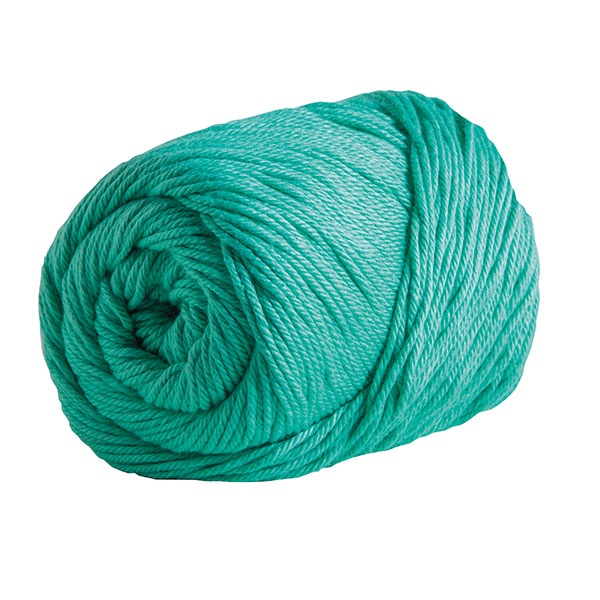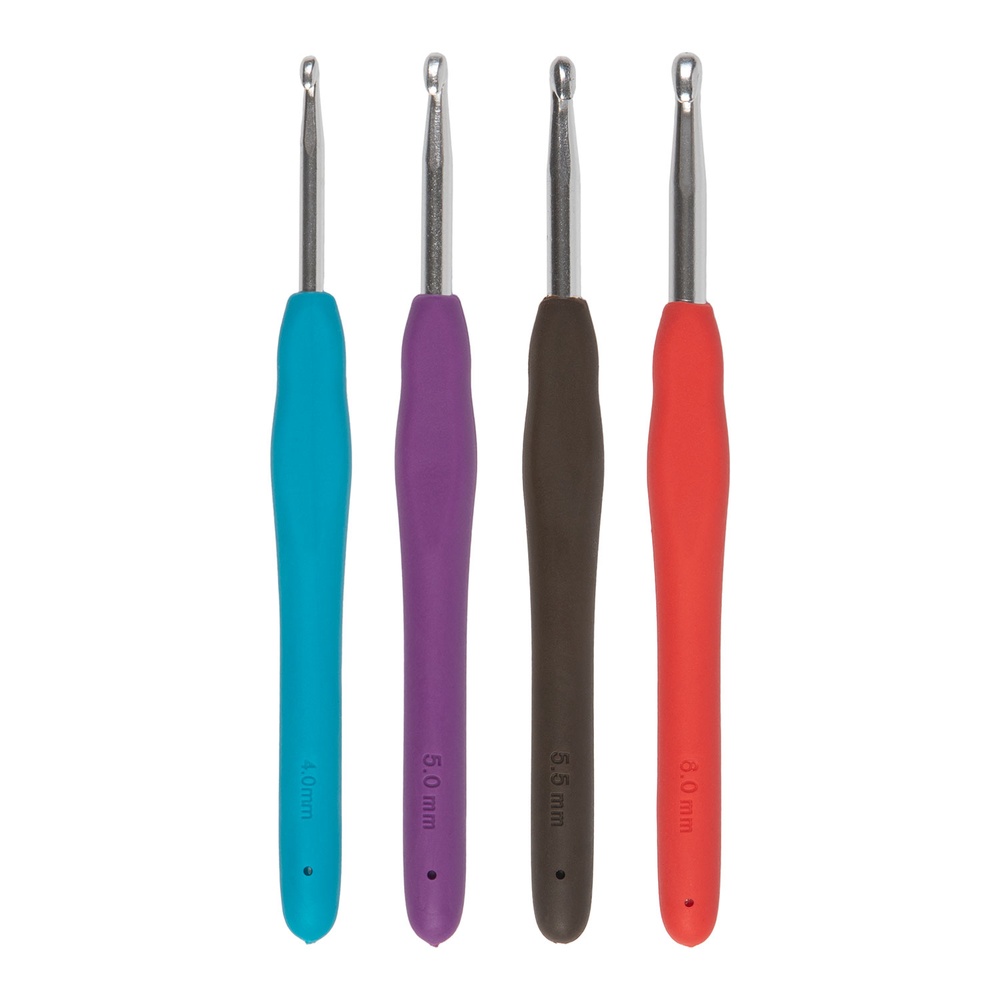Crochet Market Bag Pattern for Farmers Market Season
I made my first attempt at crocheting a market bag with cheap acrylic yarn and ended up with a stretchy mess that could barely hold a single orange without the bottom sagging to my knees. That's when I learned that choosing the right materials and understanding how stitches behave makes the difference between a useful bag and an expensive mistake.
There's something satisfying about carrying a handmade bag to the Saturday farmers market, especially when it's sturdy enough to handle real use instead of just looking pretty. This beginner-friendly crochet market bag is designed to be stretchy yet durable, perfect for carrying fresh produce, bread, or even a few heavy jars without falling apart. Made with natural cotton yarn and simple stitch repeats, it works up quickly without requiring fancy techniques or complicated shaping.
Is This Project For Me?
If you're tired of flimsy plastic bags that rip or reusable bags that never seem to be in your car when you need them, this is perfect for you. You want something practical that you can make yourself without advanced crochet skills or expensive materials. This works whether you're a complete beginner to crochet or someone who knows basic stitches but wants a useful project. You can customize the size to your needs and make several for different uses. If you love the idea of carrying something you made with your own hands that actually improves your shopping experience, this belongs on your project list. Make sure and check out the free printable Fiber Art Quick Guide below.
Get The Guide
Ready to stop feeling lost every time you pick up needles or thread? This guide covers the core techniques, tools, and terms for knitting, crocheting, weaving, and simple sewing. No more guessing, just clear steps and beginner checklists so you can actually start (and finish) projects you love.
Disclosure
Some links on FiberMaiden are affiliate links. When you click and purchase, I may earn a small commission at no extra cost to you. I partner only with brands and tools I trust and use in my own kitchen, studio, and garden. Your support means a lot.
Get 3 Free Recipe Sheets
Ready for recipes that don't require a culinary degree to follow? Get seasonal recipe sheets designed for real kitchens and busy lives, the kind that work even when your kids are asking for snacks mid-prep.
Troubleshooting and Safety
Bag stretching too much and losing shape: You're probably using yarn that's too soft or your tension is too loose. Cotton yarn provides better structure than acrylic for bags. Tighten your tension slightly, or try a smaller hook size to create denser fabric.
Stitches looking uneven or sloppy: Consistent tension takes practice, especially with repetitive stitch patterns. Count your stitches regularly and use stitch markers to keep track of rounds. Uneven edges usually indicate missed or added stitches.
Handles uncomfortable or too thin: Single strands can cut into your hands when carrying heavy loads. Make handles thicker by working multiple rounds or reinforcing with additional yarn. Consider the weight you'll actually carry when designing handle thickness.
Bag bottom sagging with weight: The gauge might be too loose, or you need more foundation rounds for stability. A firmer bottom section supports weight better than loose stitches. Consider adding a cardboard or plastic insert for heavy-duty use.
Yarn splitting while working: Cotton yarn can split more easily than wool or acrylic. Use a hook with a smooth finish and avoid catching individual plies. A slightly larger hook can help if splitting continues to be a problem.
Project taking much longer than expected: Simple stitch patterns should work up relatively quickly. If progress feels slow, check that you're not making the bag larger than necessary or using overly tight tension that slows your stitching speed.
Frequently Asked Questions
Fiber Arts Quick Guide
One page for yarn weights, needle & hook sizes, gauge basics, and quilt math. Keep within reach while you work.
Yarn weights at a glance
| Weight | CYC # | Knit gauge (sts/4 in) • Needles US | Crochet gauge (sts/4 in) • Hook |
|---|---|---|---|
| Lace | 0 | 33–40+ • 000–1 | 28–36+ • Steel/B–C |
| Fingering / Sock | 1 | 27–32 • 1–3 | 21–32 • B–E (2.25–3.5 mm) |
| Sport | 2 | 23–26 • 3–5 | 16–20 • E–7 (3.5–4.5 mm) |
| DK | 3 | 21–24 • 5–7 | 12–17 • 7–I (4.5–5.5 mm) |
| Worsted | 4 | 16–20 • 7–9 | 11–14 • I–K (5.5–6.5 mm) |
| Bulky | 5 | 12–15 • 9–11 | 8–11 • K–M/N (6.5–9 mm) |
| Super Bulky | 6 | 6–11 • 11–17 | 5–9 • M/N–Q (9–15 mm) |
| Jumbo | 7 | 1–6 • 17+ | 0–5 • Q+ (15 mm+) |
Always swatch. Fiber content, twist, and your tension change gauge.
Needle and hook conversions
Knitting needles (US ↔ mm)
| US | mm |
|---|---|
| 0 | 2.00 |
| 1 | 2.25 |
| 2 | 2.75 |
| 3 | 3.25 |
| 4 | 3.50 |
| 5 | 3.75 |
| 6 | 4.00 |
| 7 | 4.50 |
| 8 | 5.00 |
| 9 | 5.50 |
| 10 | 6.00 |
| 10.5 | 6.50 |
| 11 | 8.00 |
| 13 | 9.00 |
| 15 | 10.00 |
Crochet hooks (Letter ↔ mm)
| Hook | mm |
|---|---|
| B | 2.25 |
| C | 2.75 |
| D | 3.25 |
| E | 3.50 |
| F | 3.75 |
| G | 4.00 |
| 7 | 4.50 |
| H | 5.00 |
| I | 5.50 |
| J | 6.00 |
| K | 6.50 |
| L | 8.00 |
| M/N | 9.00 |
| N/P | 10.00 |
Gauge and swatch basics
- Knit or crochet a 6 × 6 in swatch. Wash and lay flat to dry.
- Measure the center 4 in square. Count stitches and rows.
- Stitches per inch: stitches in 4 in ÷ 4. Rows per inch: rows in 4 in ÷ 4.
Cast on = target width (in) × stitches per inch + 2 edge stitches.
Rows to length = target length (in) × rows per inch.
Quilt and sewing quick math
- Seam allowances: quilting 1/4 in • garments 5/8 in
- Half-square triangles (HST): cut size = finished size + 7/8 in (or add 1 in and trim to square)
- Quarter-square triangles (QST): cut size = finished size + 1 1/4 in
- Binding estimator: total length = perimeter + 12 in; strip count = ceil(total ÷ WOF). Typical strip width 2.5 in
- Prewash tips: prewash reds/darks. Press, square the grain, then cut.
Labeling and project notes
- Yarn or fabric source, colorway, lot, and fiber content
- Gauge and needle or hook size
- Pattern name and size adjustments
- Wash and care instructions
© FiberMaiden • www.fibermaiden.com












